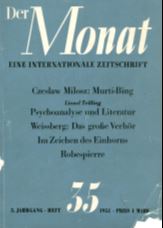
We kindly inform you that, as long as the subject affiliation of our 300.000+ articles is in progress, you might get unsufficient or no results on your third level or second level search. In this case, please broaden your search criteria.

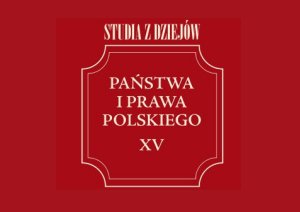
Implementation of the wide-ranging rights bestowed on the Permanent Council entailed the need for making detailed documentation, both at the level of the Council’s General Chancellery and of the chancelleries of its all five departments. To this day, two basic types of protocols – current (potoczne) that contain lists of all the activities of the Council at the plenary sessions, and of public expedition, which gathered the printed proclamations and copies of resolutions passed by the Council and sent to the interested parties – have been fully preserved in the form of manuscripts and prints in the Central Archives of Historical Records (AGAD) in Warsaw
More...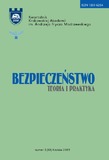
The 220th anniversary of Kościuszko Uprising was celebrated in March this year. The role of Tadeusz Kościuszko in this historical event is worth remembering and we should ponder about the chances of the first national liberation uprising, which was the first attempt in the history to awaken the patriotism among the people of the Republic of Poland (we have to take under consideration the fact that most of them were serfs without the motivation to fight for their cause). It was the revolution in thinking and activity of the idealist such as Tadeusz Kościuszko, but in those conditions of political surrounding and social determinants of noble Poland it was doomed to fail.
More...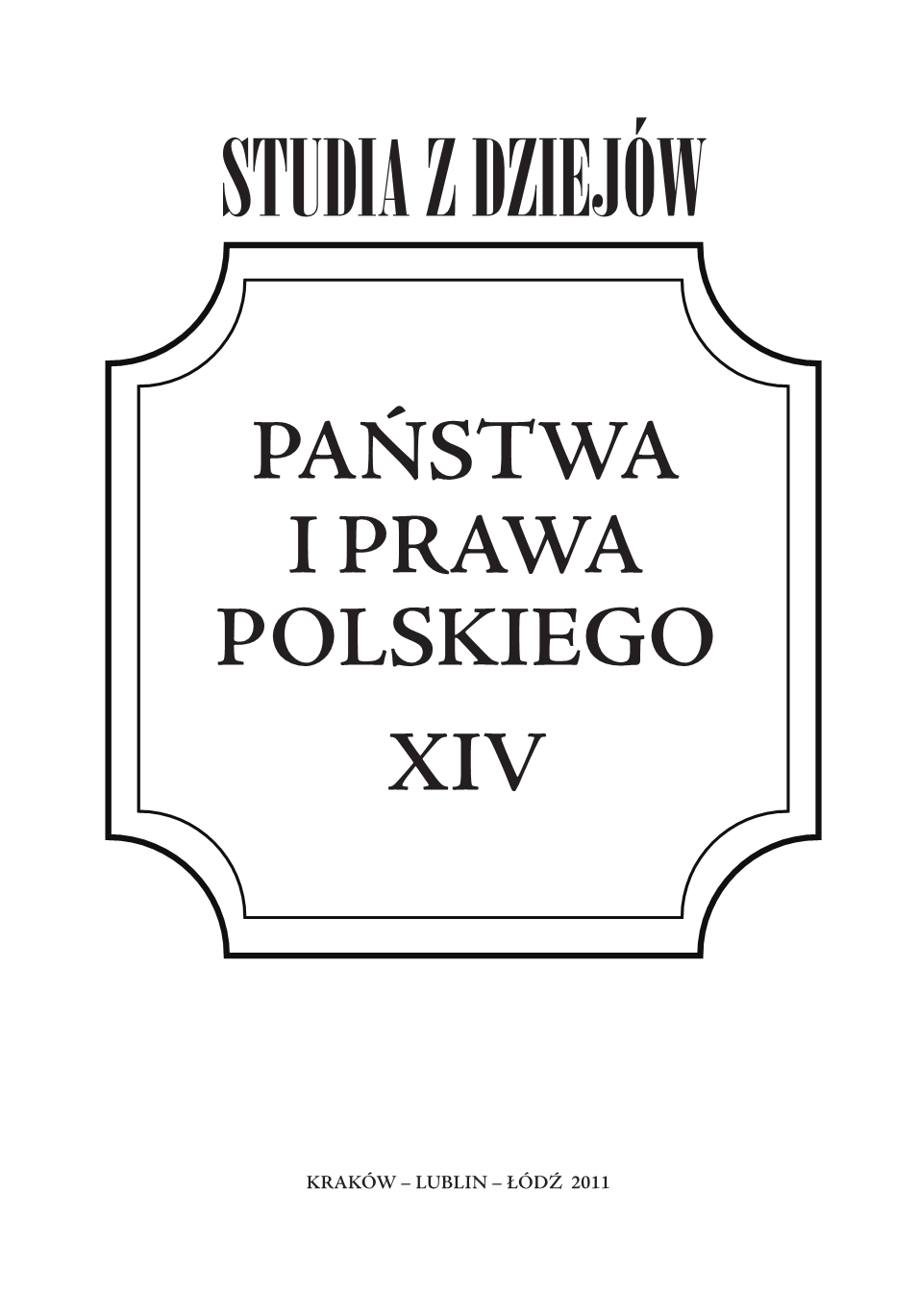
1. Introduction. 2. 17th- and 18th-century testaments in the collection of the Diocesan Archive in Pelplin. 3. Description of the testament of Agnieszka Wądołowska. 4. Source text.
More...
Aufklärung habsburgisch: Staatsbildung, Wissenskultur und Geschichtspolitik in Zentraleuropa 1750–1850. By Franz Leander Fillafer. Göttingen: Wallstein Verlag, 2020. 628 pp.
More...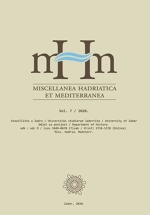
The central purpose of this paper is to analyze the participation of the people from Sinj and from Cetina Border in the Venetian overseas ground forces (infantry and cavalry units) in the 18th century. It analyzes the original source material kept in Archivio di Stato di Venezia – the lists of members of particular military units made by the competent magistracy (Inquisitori sopra l’amministrazione dei pubblici ruoli). The introduction provides general information on the Venetian overseas troops in Eastern Adriatic, while the central part of the paper analyzes the specific examples of the Sinj and Cetina Border soldiers in the Venetian ground forces. The analysis is focused on their overall numbers in the 18th century, the frequency of their mention in the sources, general information on their unit commanders, places of deployment, and some general characteristics of the soldiers of the period (age, stature etc.). The appendix to the paper contains a complete list of the people from Sinj and Cetina Border (based on the research carried out so far) recorded in the Venetian armed forces.
More...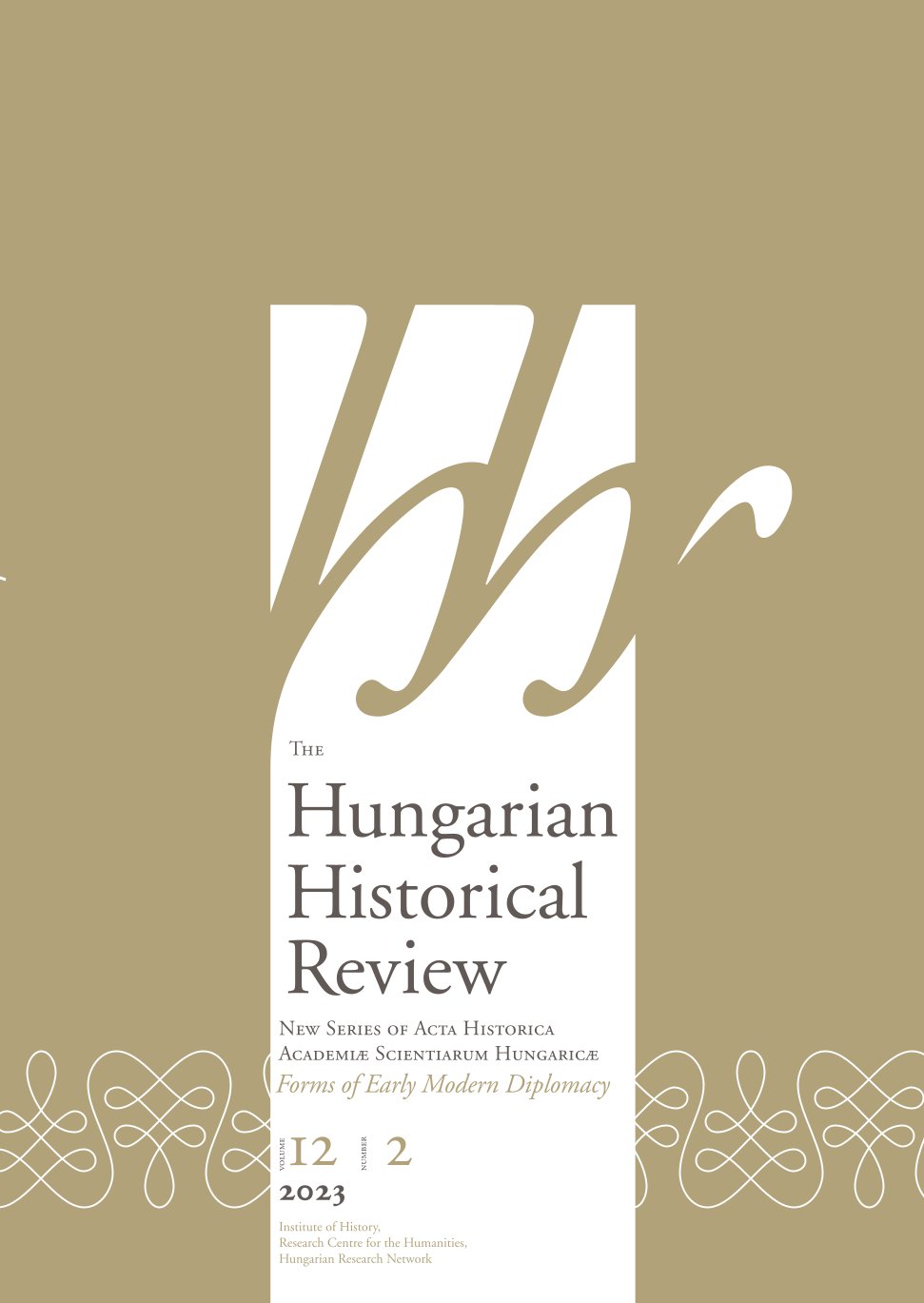
In the last third of the eighteenth century, the foreign policy of the Russian Empire was oriented towards the Ottoman Empire and, as part of it, towards the Balkans and the Black Sea region. The aspirations of Russian foreign policy under Catherine II were shaped not only by the weakening of the government in Constantinople and the acquisition of new territories, but also by the creation of Russian economic, cultural, and political presence in southeastern Europe. The creation of official diplomatic representations was one of the main tools used by Russia to establish its presence in the Balkans. The establishment of permanent embassies and the creation of the necessary political and infrastructural background became a decisive segment in the development of European diplomacy from the Peace of Westphalia to the Napoleonic Wars. The steps taken by the government in St. Petersburg with the creation of permanent embassies in the leading European courts were in line with the abovementioned trend, but while this kind of “catching up” process gradually moved towards Central and Western Europe, Russia applied a completely different set of conditions to maintain diplomatic relations in the case of the Ottoman Empire. Ottoman diplomacy operated as a “one-sided diplomatic relation”: there were permanent Russian envoys at the Constantinople court, but no representatives were delegated by the Porte to St. Petersburg. Russia had to adapt to this special situation in the eighteenth century. This closed system was broken by the Treaty of Kuchuk Kainardji, which closed the Russo-Turkish War of 1768–1774 and included a clause according to which Russia had the right to establish consulates in the Ottoman Empire and thus in the Balkans, a key area. The other key element of the Treaty of Kuchuk Kainardji was the right of the reigning Russian tsar to be the protector of Christians in the Ottoman Empire, which was also fixed in this agreement. The “authority” acquired at this time was not unprecedented, as the Porte had acceded to such requests in the seventeenth and eighteenth centuries through capitulations with other states (such as France, Austria, or the Venetian Republic), thus establishing the “protégé” system. At the same time, the Russian government took the protection of Christians under the jurisdiction of the Porte to a new level and made it an integral part of its foreign policy. In my study, I examine how the Russian Empire applied the results of the Peace of Kuchuk Kainardji to diplomatic advocacy in the Balkans.
More...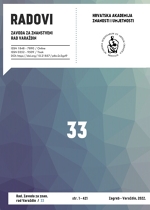
Croatian Ban and Field Marshal Franz Nádasdy and his wife Suzana née Malatinski erected a baroque Sculpture of Saint John of Nepomuk on their Zelendvor estate around 1767. The stone carved image of the Czech priest was placed in the castle's park after she had remarried following the death of her first husband Josip Kazimir Drašković. Today, the sculpture adornsthe south side of the park of the Old Town Castle in Varaždin. Four documents, handwritten in ink and machine typed from the end of August 1932 to November 1933, reveal it was placed there in August 1932 by the Varaždin Museum Society. Local lawyer Nikola Pečornik complained to the Varaždin City Council he would rather have the museum experts place it inside the castle, in the northeast corner of the larger courtyard, to the left of the buttress at the beginning of the smaller courtyard and to the right of the entrance to the room displaying cannons. The preserved appeal outlines the difficulties that arose when placing it outside the architectural monument. On August 24, 1932, Mayor Stjepan Novaković tried to resolve the dispute with the help of other experts and city representatives in the premises of the castle itself. There, architect Artur Kaderávek stated the museum experts had followed his advice regarding the location of the sculpture, while city engineer Viktor Rogina and Varaždin City Council member Mirko Hikec sided with Pečornik, who believed the sculpture in the park would give the impression that it was created in the context of the very castle. In a subsequent hearing, museum experts Krešimir Filić and Adolf Wissert stated they acted in accordance with the law and that the building materials and workers who were building the pedestal for the baroque sculpture had been paid. On August 25, the President of the Varaždin Museum Society Adolf Wissert and Mirko Hikec reached a compromise allowing the workers to finish constructing the pedestal and obliging the museum expertsto remove the sculpture if recommended so by an expert. In 1933, Mayor Stjepan Novaković decided to consult with the conservator Gjuro Szabo, secretary of the former National Commission for the Preservation of Artistic and Historical Monuments in the Kingdoms of Croatia and Slavonia. No documents have been discovered that would reveal what Gjuro Szabo, Filić's longtime friend and adviser on museum and monument protection issues, recommended. Unfortunately, the preserved complaint does not provide a reason for the museumization of the sculpture from the Zelendvor estate which was at the time governed by Josip, the son of Marko Bombelles Jr. Six perserved letters and a postcard, written mostly in 1932, reveal that the sculpture, the client and the exact identification of the saint it represents were discussed by the Zagreb canon and historian Ljudevit Ivančan and a certain Pavao Wittmann, both thinking that it was St. Donatus. On the other hand, don Frane Bulić, the former conservator for Dalmatia, believes that the statue is not suitable for placement in the castle grounds and asks the members of the Varaždin Museum Societa to explain to him the scientific reasons that led them to place it there. The preserved appeal and corespondence document the effort of the Varaždin Museum Society to preserve the baroque artwork for future generations who today enjoy another sculpture in their city.
More...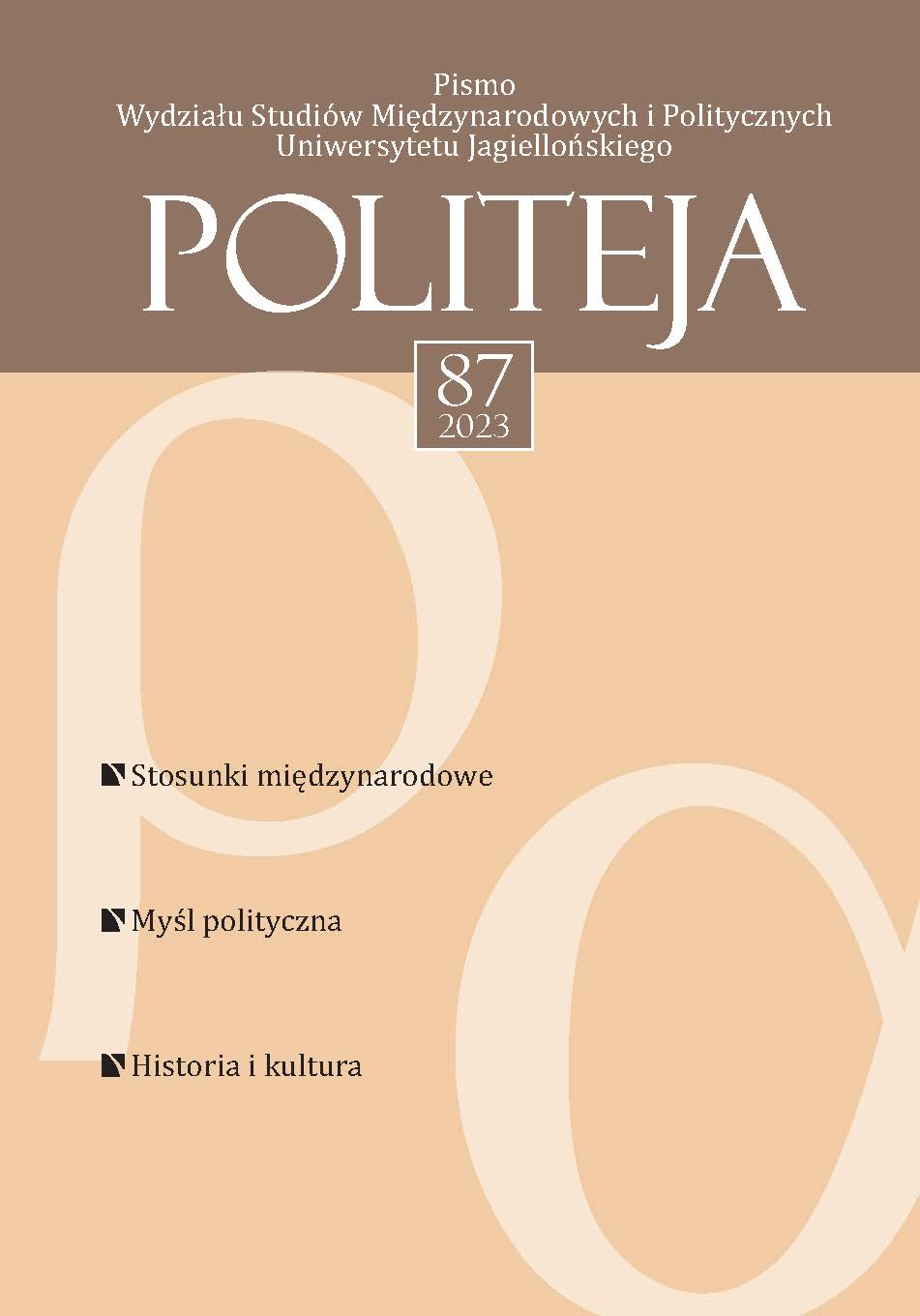
The title of this article alludes to the famous novel by Stefan Zweig Ungeduld des Herzens (translated into English as “Beware of Pity”). The novel illustrates the destructive role that pity plays in our private life, but, as will be argued in the article, the role of pity can be equally destructive in public life. The first part of the article has a conceptual character – the distinction is made therein between two types of pity: (1) as “the heart’s impatience (Ungeduld des Herzens)” to “rid itself as quickly as possible of the painful experience of being moved by another person’s suffering (Stefan Zweig, Beware of Pity, p. 19)”; and (2) as a mixture of contempt towards the sufferer and increased sense of one’s own power. What these two types of pity have in common is that they are self-regarding, that is, not having as its ultimate aim the well-being of the suffering person, and in fact preserving distance to the sufferer. This feature distinguishes them from compassion – a truly other-regarding fellow-feeling with the sufferer. The second part of the article, inspired by Zweig’s novel, will trace the negative consequences of pity in our private lives. The third part will strive, first, to reconstruct Hannah Arendt’s argumentation (presented in her book On Revolution) for her critical evaluation of pity as a political emotion, and secondly, to develop it in some new directions (inter alia, drawing on the above distinction between two types of pity, which is absent in Arendt’s analysis). Finally, it will be argued that even though in private life empathy (broadly understood) does not have to take the form of pity (it often assumes the laudable form of compassion), it is almost bound to take the form of pity in political life. If this claim is true, it means that one needs to treat with much caution the oft-made postulates of increasing the role of ‘empathy’ in public life.
More...
Reading Ottoman-Polish diplomatic relations leads to a clear conclusion that in the late 18thcentury, the Polish-Lithuanian Commonwealth had an opportunity to enter into an inter-national alliance as a partner alongside the Ottoman Empire. Topaktaş has not attemptedto create hypothetical scenarios regarding the survival or otherwise of the First Republic,but has reconstructed the idea of an Ottoman-Polish alliance in a scholarly manner, drawingon a rich body of historical sources. The publication contains innovative insights from thefields of history, political science and international relations. It takes into account the lateststate of research and the results of searches personally conducted by the author. Topaktaşhas almost managed to avoid factual mistakes and errors. The scale of the research apparatusused and the high specialisation of the technique of the historian of Polish-Turkish rela-tions makes this monograph a work complementary to the diplomatic relations betweenthe Republic of Poland and the Ottoman Empire. The reader is presented with a convincingargument alternating with a narrative that gives the impression of a reportage on the journeyand stay of Franciszek Piotr Potocki - all wrapped up in academic terminology. The authorhas accomplished the research goals declared in the introduction. I personally believe thatTopaktaşs book is a groundbreaking and inspiring treatise on the late 18th century. It is worthrecommending to enthusiasts of Ottoman studies, but also to students of history interestedin the subject.
More...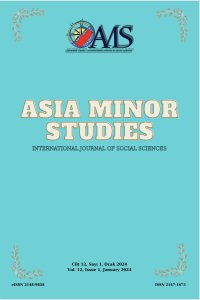
The struggle for the independence of East Turkestan dates back to the middle of the XVIII century, when China began to pursue an expansionist policy. In the middle of this century, the Chinese, using the internal struggles among the Turks, dominated the Turkestan geography in a short time. After the Chinese conquered the region, they named East Turkestan Xinjiang and started to eliminate the Turkish presence here. These assimilation policies have been the beginning of the East Turkistan cause period that will last until today. This study aims to examine the magazine named "China Turkistan Avazı", one of the first magazines published by Isa Yusuf Alptekin, one of the leading figures of the East Turkistan cause, and to analyse the news about the Turkistan struggle in the magazine. The subject of the magazine includes the history of the East Turkistan independence struggle and the political, social and economic events of the period. In addition, the problems of the people of the region with China and Russia were included in the magazine as witnesses of the period. The method of the study is the transcription of the Uyghur text of the journal in Arabic script and its analysis with a historical-critical approach. The importance of the study Considering that Uyghur sources are not sufficiently utilised in studies on East Turkestan, introducing this important source that sheds light on the history and culture of East Turkestan will contribute to the field.
More...
Review of: Zbyněk Sviták: Návštěva Marie Terezie na Moravě v roce 1748 (Archiv města Brno: Brno, 2022. 420 pp., ISBN 978-80-86736-70-9)
More...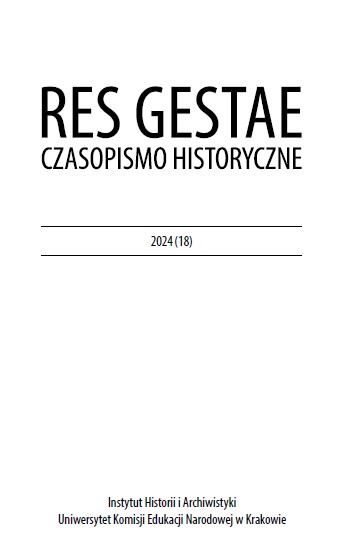
This article analyzes Old Polish correspondence, particularly the festive wishes directed to Elżbieta z Lubomirskich Sieniawska (d. 1729), the castellaness of Kraków. The author illustrates how, in the magnate’s everyday life, the tradition of greetings during Easter, Christmas, and New Year was observed. Through thoughtful expressions, various social strata expressed respect and loyalty to their patrons, contributing to the development of early modern systems of interpersonal communication. The article serves as a contribution to the study of Old Polish language history and ancient customs, presenting a synthesis of wishes sent by informants to the castellaness of Krakow. Utilizing letters and gazettes, the author argues that these wishes strengthened Sieniawska’s trust in her postmen and newsmen, playing a significant role in social relations.
More...
This study aims to present the physician Johann Melitsch (1763–1837) as a courageous reformer who presented a specific alternative to the étatist model of healthcare reforms implemented by the Habsburg monarchy in the 18th century. As obstetrics was the focus of Melitsch’s reform activities, the paper also contributes to the broader issue of the professionalisation of obstetrics at the turn of the 18th and 19th centuries. In the 1780s, Joseph II decided to use the assets of the secularised monasteries and hospitals to form a state complex of various health and social care facilities in the capitals of the Habsburg “provinces”. Where conditions and proximity to the university allowed, the first real “clinics”, i.e. hospitals linked to the teaching of medicine (and therefore science), were established: this was the case, for ex ample, in Vienna and Prague. General hospitals formed the core of these complexes; maternity hospitals were also built, primarily for unmarried mothers, to prevent infanticide, but also as a source of female bodies for young medical students, who otherwise generally did not have the opportunity to learn about pregnancy and childbirth. At the same time, a young doctor who had just finished medical school in Prague, the twenty-four year-old Johann Melitsch, the son of a cabinet-maker, decided to undertake another project: a Privat entbindungsanstalt, ie. private outpatient maternity clinic. It was designed for married but poor women and also offered the opportunity of midwifery practice to medical students. Thanks to a family inheritance and his wife’s dowry, he was indeed able to found such an institution. And with donations from wealthy patrons from the nobility, he was able to provide small financial rewards or medicines to his patients. His assistants were students. Melitsch later extended his outpatient care, which was also improved by the “district doctors”, to sick women and children in general and thus offered a counterpart to the “stationary” type of state general hospital. In 1793, he was finally appointed professor at the Prague Faculty of Medicine – but only after the intervention of Emperor Francis I himself, who also granted this institution a “public right”. In 1795 Melitsch drew up a proposal – also probably the first in the Habsburg monarchy – for health insurance for low-income segments of the population. However, this system was never put into practice. In this predominantly Catholic monarchy, where hospitals had hitherto operated mainly on a church or municipal basis and where there was a clear tendency in Melitsch’s time to create a purely state-run health service, this was an exceptional case. The paper is also a contribution to the broader issue of the professionalisation of midwifery at the turn of the 18th and 19th centuries. Besides that, Melitsch is considered to be the first doctor in the Czech lands to perform a successful caesarean section in which both mother and child survived.
More...
Wenzel Trnka von Krzowitz was born in 1739 in Tabor. He graduated from the University of Vienna, where after studying philosophy he studied at the Faculty of Medicine. His personality and systematic work attracted the attention of Gerard van Swieten, who in 1769 made a significant contribution to the institutional establishment of the first medical faculty in the Hungarian Lands. Trnka thus became one of the founding members of this faculty, where he was appointed professor of anatomy. The Faculty of Medicine was the last part of the Pázmany University to be established in Trnava, which could not meet the needs of a growing university, especially of the medical faculty itself, and so in 1777 the entire campus was moved to Buda. While still in Trnava, in 1775, Trnka published one of his most important works, Historia febrium intermittentium, in which he discusses intermittent fevers. These fevers were a relatively common and unpleasant phenomenon in Europe, especially in certain regions. They are caused by protozoa of the genus Plasmodium, discovered in the 19th century, which cause several types of malaria, all of them being characterised by periodic bouts of fever. In his work, Trnka discusses in detail both the actual course of the disease and the treatment, emphasizing the use of quinine bark. The work contains several historically valuable chapters. It describes views and treat ments of malaria in the 18th century, focusing also on those areas in the Habsburg Monarchy where the disease was widespread. Through Trnka’s work, the article provides an insight into life with this now exotic disease, which is today of little concern in our part of the world.
More...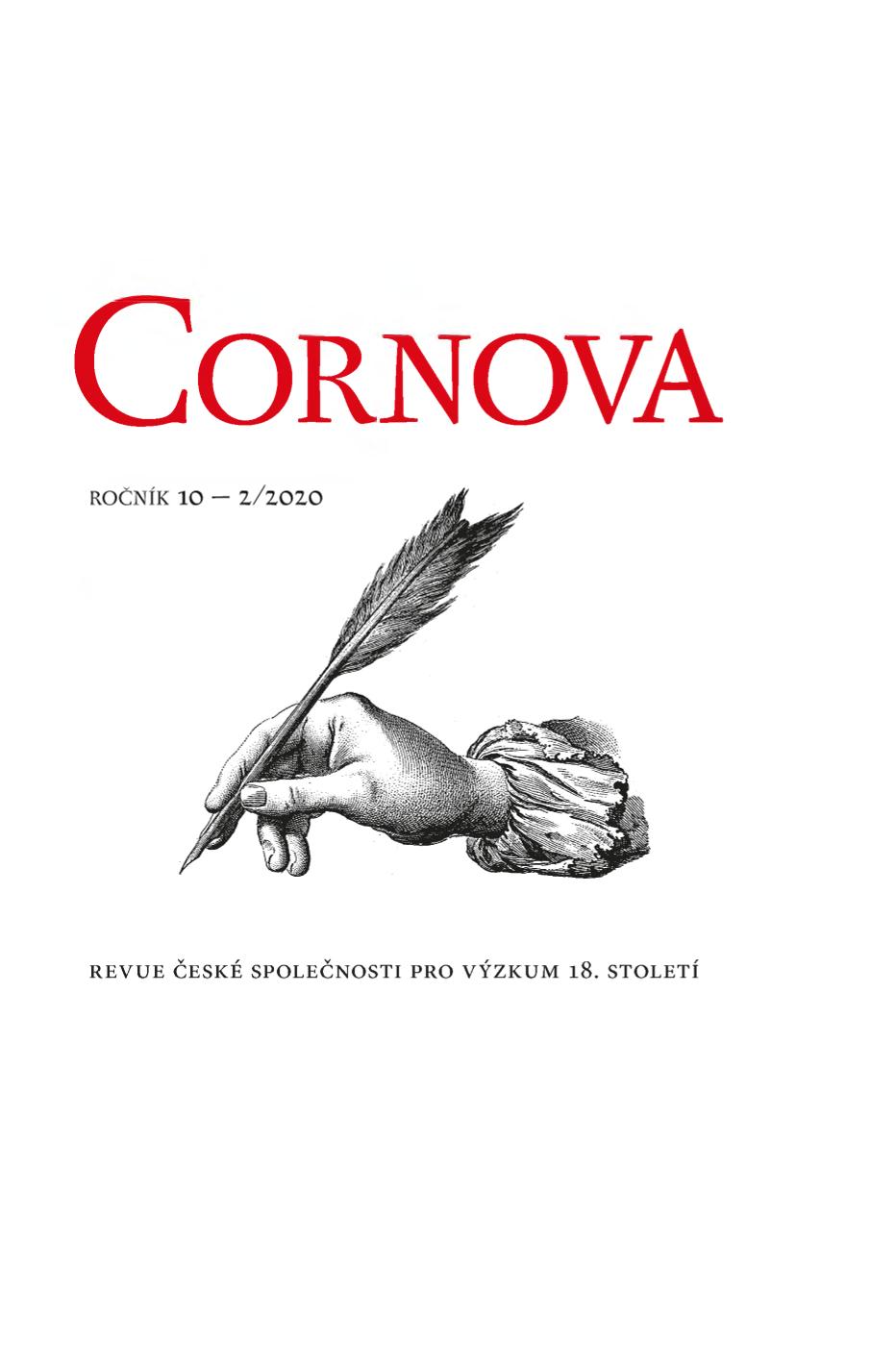
Review of Friedrich Vollhardt, Gotthold Ephraim Lessing. Epoche und Werk, Göttingen: Wallstein 2018. 490 s.
More...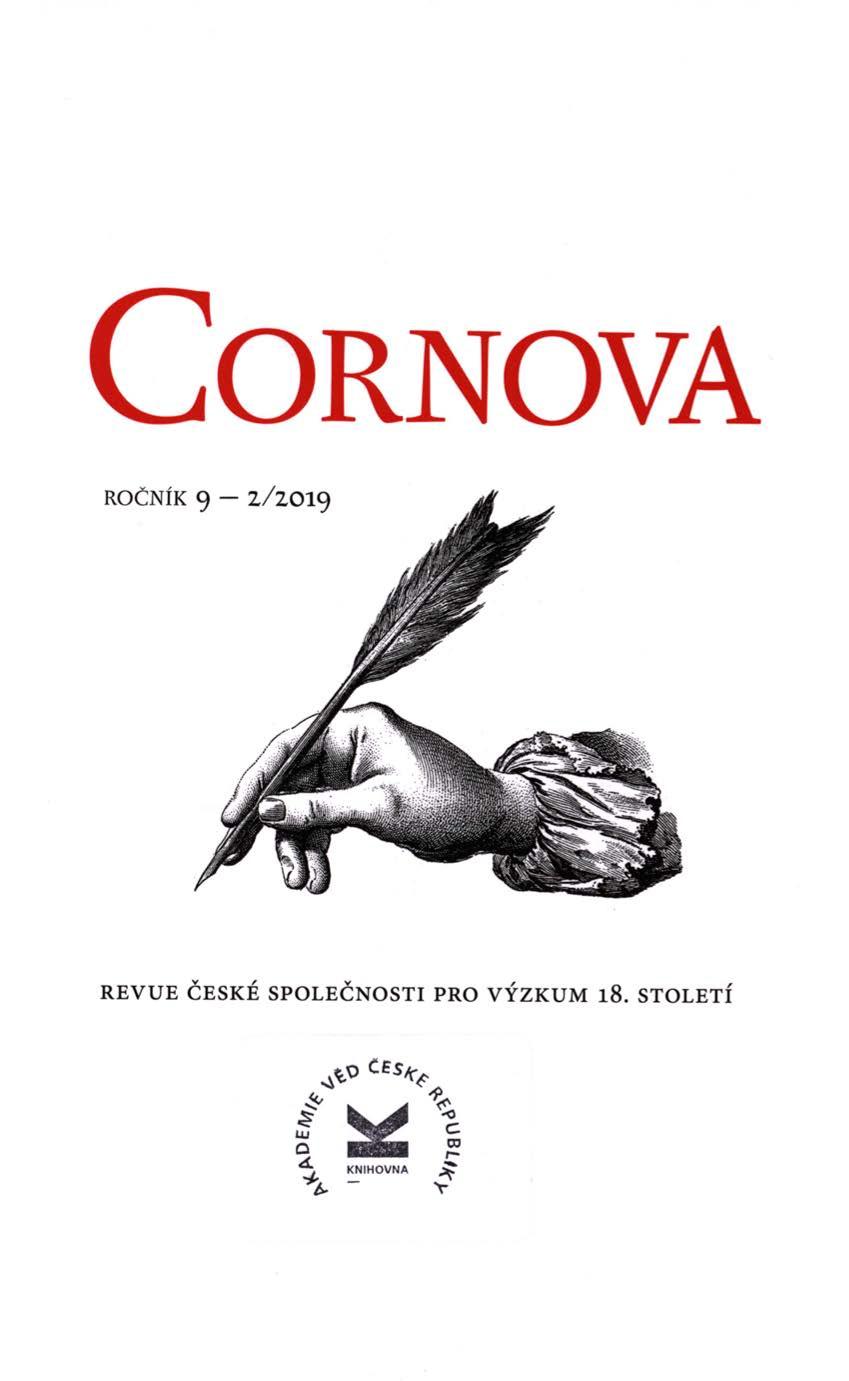
The study deals with the journal Religion und Priester, which was published between 1782 and 1784 in Prague and Vienna. At first, the author tries to summarize some basic facts on the journal, correcting some errors concerning its publishing and authorship. The core of the study consists in the analysis of its criticism of priestly celibacy. Religion und Priester discussed this problem repeately, using various strategies of argumentation based on history, philosophy of human nature and political thought.
More...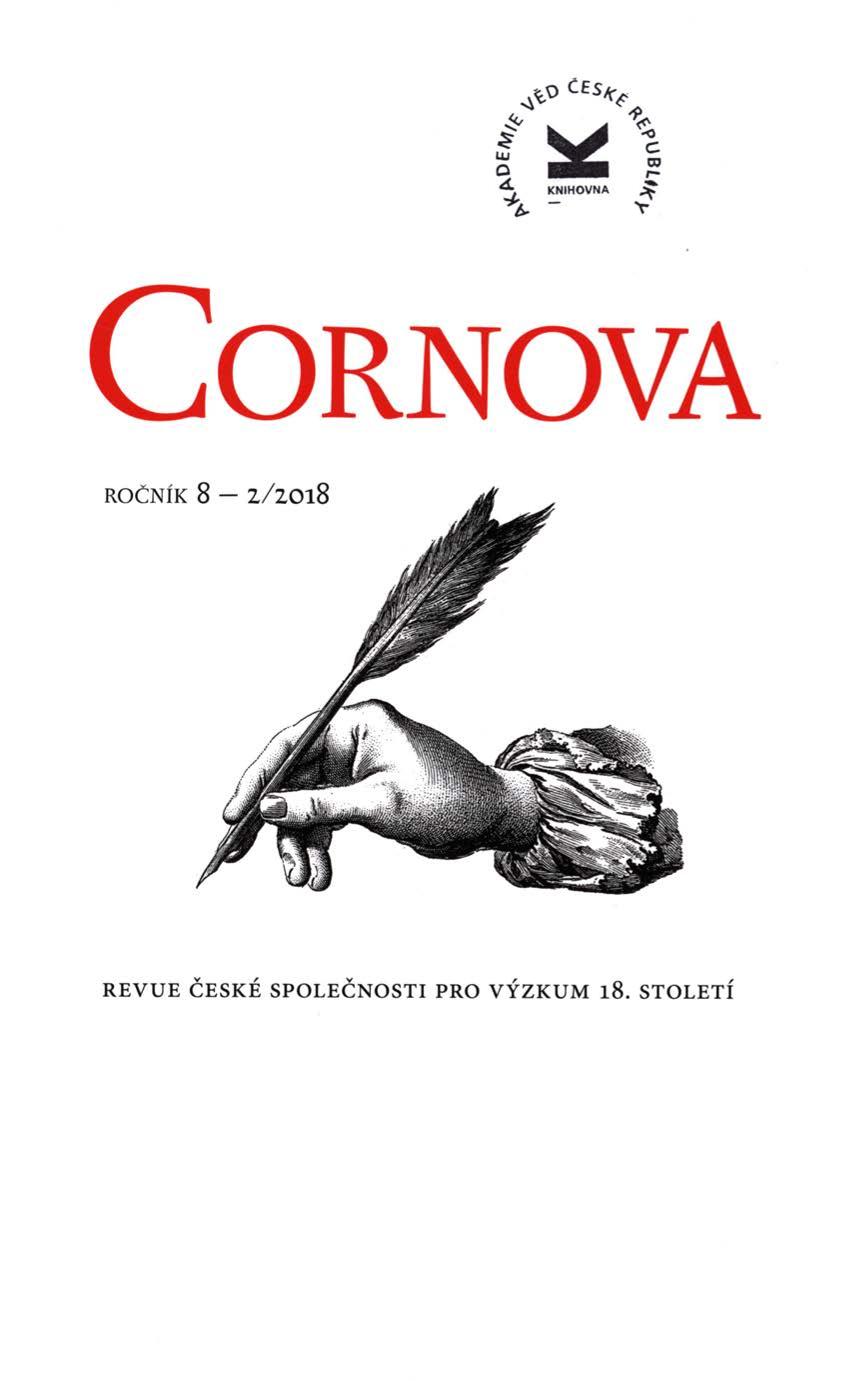
Ve dnech 22.-25. srpna 2018 se v Bordeaux konalo za předsednictví prof. Wolfganga Schmaleho (Rakousko) zasedání výkonného výboru Mezinárodní společnosti pro výzkum 18. století (International Society of 18th Century Studies - Société Internationale ďEtude du Dix-huitiéme siěcle), opět za účasti zástupců dceřiných společností včetně České společnosti pro výzkum 18. století. Hostitelské role se ujala místní univerzita (Universitě Montaigne) a zasedání se konala v budově jejího výzkumného centra (Maison de Recherche) a v Goethe Institutu.
More...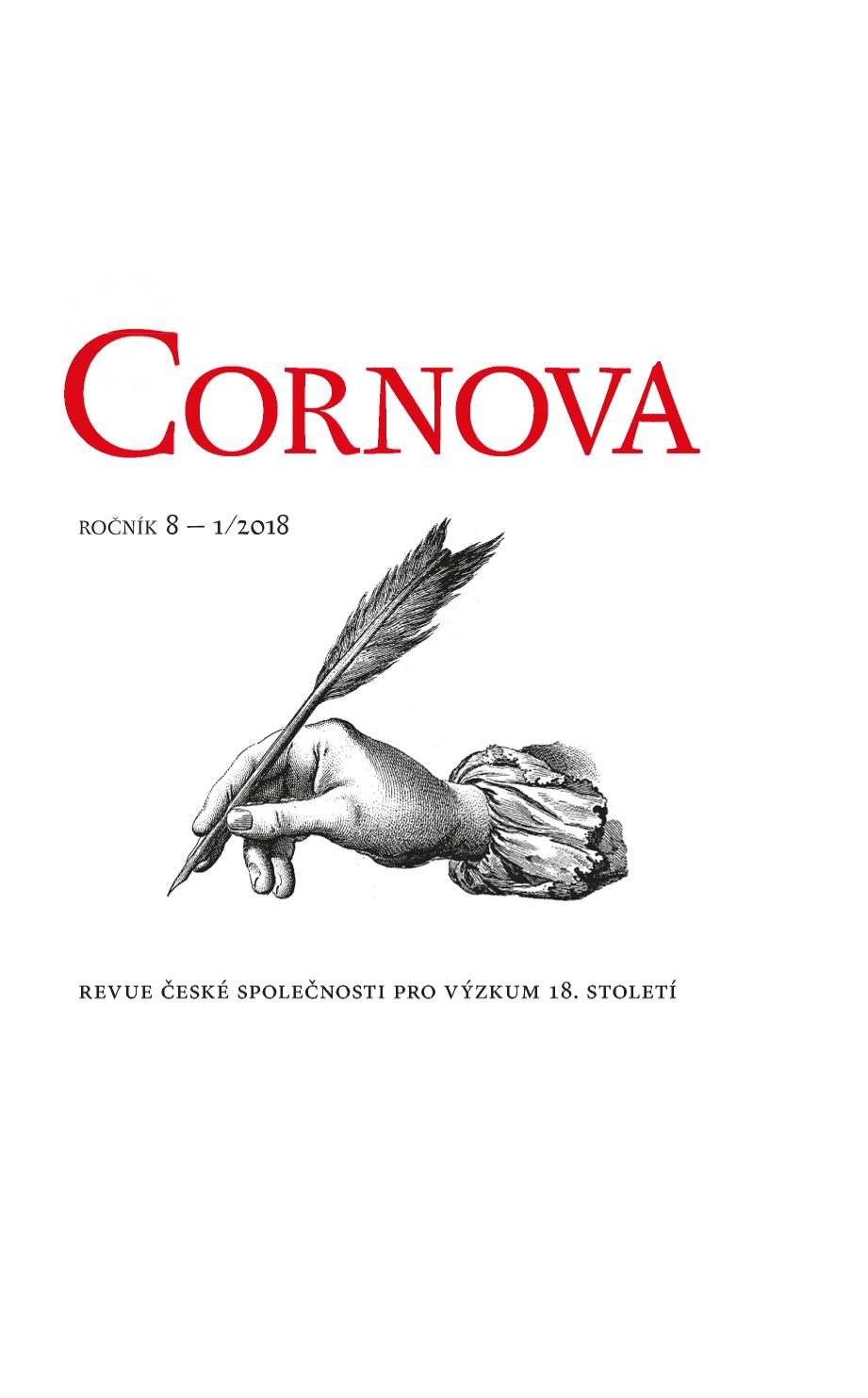
Adventus of Francis I and Maria Theresa to Florence the capital of the grand duchy of Tuscany represents an event that should not be forgotten. A reference to this ceremonial entrance of the emperor that took place on January 20, 1739 is nowadays commemorated by the Arco di Trionfo in Florence, by the relief on sarcophagus of Maria Theresa and Francois I in Imperial Crypt in Vienna as well as in the preserved written records. Based on one of the period sources (Relazione Dell’ Ingresso fatto in Firenze Dalle Altezze Reali del Serenissimo Francesco III Duca di Lorena, e di Bar, ec. ec. Granduca di Toscana, E della Serenissima Maria Teresa, Arciduchessa d’ Austria, e Granduchessa di Toscana. Il dì 20. Gennaio 1738. ab Inc.), the course of the ceremonial entrance was reconstructed. Bearing in mind its author’s intention to provide an idealized record of the event aiming to glorify the new grand duke the text was subjected to collation with hard facts of the period to obtain a more realistic view of the event.
More...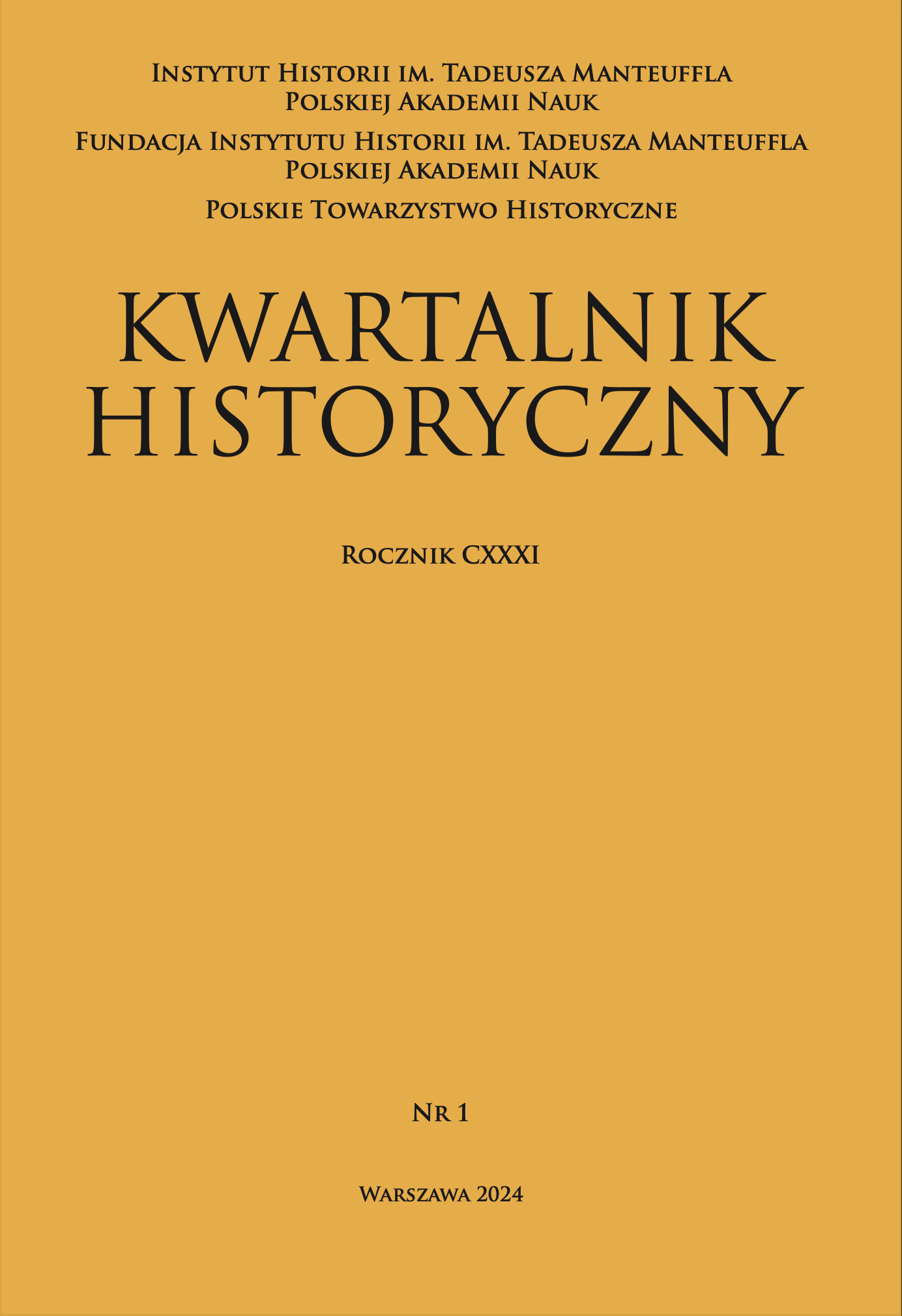
Otto Heinrich Igelström’s corres- pondence with Empress Catherine II and her favourite, Platon Zubov, not only pro- vides insight into the details of Igelström’s actions as Russian general en chef and ambassador to the Polish-Lithuanian Com- monwealth in 1793–1794, but also allows for a better understanding of Russia’s stra- tegy during the crushing of Kościuszko’s rebellion following the second partition of Poland-Lithuania. The crucial element of this strategy was the transfer of the major- ity of the Commonwealth soldiers to Rus- sian service and contingency planning for a possible war with the Kingdom of Prussia on the remaining territory of Poland-Lith- uania. These plans demonstrate St Peters- burg’s disregard for the political costs of the achievement of its aims, which included the possibility of a Polish uprising.
More...